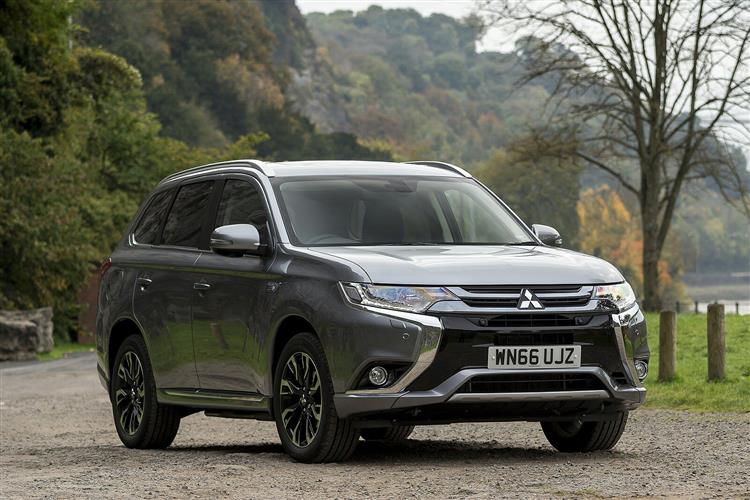OUTLANDISH SAVINGS (some text hidden) --NONE--
By Jonathan Crouch
Introductionword count: 93
Mitsubishi have always recognised the role that electricity can play in powering cars. After forty years of powertrain development, they were the first to launch a pure electric model in our market, then followed that up in 2014 with this car, the Outlander PHEV. This was the world's very first 4WD Plug-in Hybrid SUV and it's created quite a stir. A careful package of improvements introduced in 2015 continued that sales momentum, creating a smarter, quieter and more appealing product. It's that post-2015-era Outlander PHEV we look at here as a used buy.
Modelsword count: 9
5DR SUV PLUG-IN HYBRID (3H, 4H, 4HS, 5H, 5HS)
Historyword count: 225
The third generation Outlander SUV was the car that rejuvenated Mitsubishi's sales in this country. The reason why can be explained with four simple letters - 'PHEV'. Industry-leading Plug-in hybrid technology gave the Japanese brand an advantage over most of its rivals in this segment, in the 21st century's second decade giving the Mitsubishi marque a degree of notoriety in our market it hadn't had for years. After considerable initial sales success, this model was significantly revised in 2015. There are limitations to Mitsubishi's cleverness here. The bulkiness of the mechanicals needed with Plug-in hybrid motoring prevents this petrol/electric variant offering the useful third row seating you'd get with an Outlander from this era powered by a conventional diesel engine. For the same reason, the PHEV variant's fuel tank is smaller too, which is one of the reasons why you don't get the same kind of total operating range that you would with the diesel version. Still, the advantages of Plug-in hybrid technology this car delivered to its owners were significant and in 2015, Mitsubishi moved to embellish them with a package of changes that included a far-reaching facelift. This particular version of this car sold until mid-2018, when it was replaced by a further revised 2.4-litre version. It's the 2015-2018-era 2.0-litre PHEV Outlander model that we look at as a potential used buy here.
What You Getword count: 233
This improved post-2015-era third generation Outlander certainly looks a whole lot sharper than the original version of this MK3 model did. In place of the rather apologetic looks of that car, we were, with this facelifted model, treated to smarter, more confident styling exemplifying what Mitsubishi called its 'Dynamic Shield' design direction. That gave us a lower, leaner and wider bodyshape, yet one still continuing with the high flanks, the raised beltline, the uncluttered surfaces and the strong shouldering that originally defined this model. Behind the wheel, this revised model got a smarter 'black ash' dashboard, padded door panels and a stitched instrument cowl, all of it adding to the cabin ambience. The things commonly interact with are much better on this facelifted model too, with a classier silver-trimmed 'joystick'-style gear lever next to a handbrake that, rather surprisingly for such a futuristic car, is of the conventional kind. In the second row, there's reasonable space for two adults - or three at a squash, with the third person's cause aided by the way that the central transmission tunnel has been kept usefully low. And luggage space out back? Well in this five-seat-only PHEV model, there's 731-litres of space - only 50-litres less than you'd get in the diesel version with the luggage area chairs folded. If you need more space, then folding the second row backrest frees up 1.85m of floor length.
To see the full road test text contact us on 0330 0020 227
Pictures (high res disabled)

.jpg)
|
.jpg)
|
.jpg)
| |||
.jpg)
|
.jpg)
|
.jpg)
| |||
.jpg)
|

|
Scoring (subset of scores)
Category: Crossover or SUV 4x4s
| Performance | |
| Handling | |
| Comfort | |
| Space | |
| Styling, Build, Value, Equipment, Depreciation, Handling, Insurance and Total scores are available with our full data feed. | |



